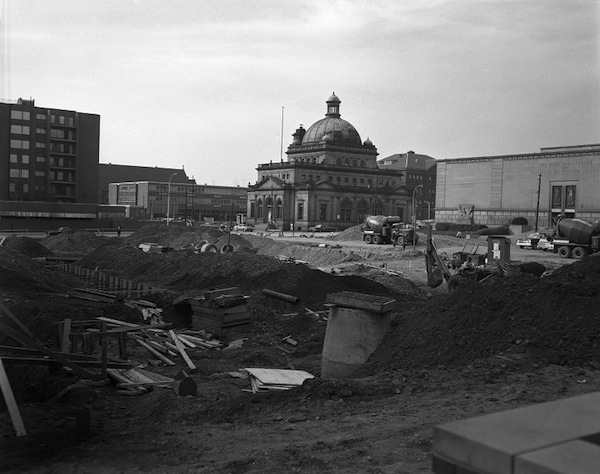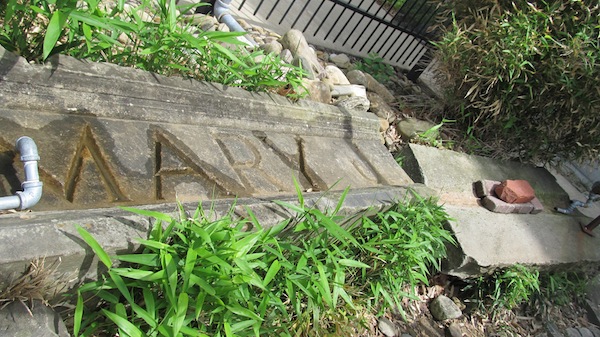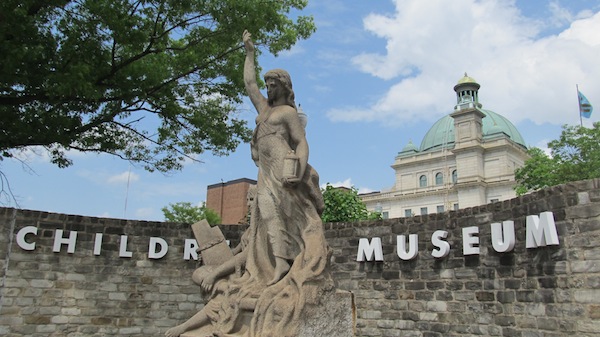
Children’s Museum of Pittsburgh: Fourth in a Series of PHLF’s Greatest Saves in 50 Years
PHLF turned 50 on September 30, 2014. Intern Lauren Van Zandt, a Public History graduate student at Duquesne University, is sharing the stories of some of PHLF’s “Greatest Saves.” Help us celebrate 50 years of Pittsburgh renewal with a donation to our 50th Anniversary Fund. Click here.
Staying on the North Side, this month’s “Greatest Save” features the Allegheny Post Office that PHLF saved and transformed into the Old Post Office Museum in the early 1970s and then eventually donated to the Children’s Museum.
Elise Oberdick, current Educational Programs Coordinator for the Children’s Museum and a former PHLF intern, gave me a tour and talked to me about the role architecture and history play in the museum’s interpretation.
A bit of background first: the Allegheny Post Office, designed in the Italianate style by William Martin Aiken, was completed in 1897 in Allegheny, an independent city until its annexation to Pittsburgh in 1907. The Post Office, like most of Allegheny’s central business district, came under threat in the mid 1960s as acres of buildings were demolished to make way for Allegheny Center. Although the Post Office was described as “doomed” in PHLF’s 1967 edition of Landmark Architecture of Allegheny County, trustees and staff successfully negotiated a last-minute “save” with the Mayor and Urban Redevelopment Authority so the historic landmark was not demolished. The catch? PHLF had to buy the building, then in ruinous condition, for $116,000 and restore it and put it to good use.
PHLF opened the Old Post Office Museum in 1972 and created a mezzanine floor to house staff offices. Many of the architectural materials on display at the Children’s Museum are from this time. PHLF displayed salvaged materials from demolished Pittsburgh buildings; decorative architecture from Ridge Avenue mansions; stained glass windows from the Henry W. Oliver mansion; and the “Ladies of Stone” from the less-fortunate post office in Downtown Pittsburgh that was demolished.
In the late 1970s, just as PHLF was beginning to develop Station Square on Pittsburgh’s South Side, the Junior League of Pittsburgh was eager to establish a children’s museum in Pittsburgh. PHLF suggested that the Junior League establish its museum in the Old Post Office, since PHLF planned on relocating its offices to Station Square. The Children’s Museum took root and grew, and PHLF leased the entire Old Post Office building to the Children’s Museum. In 1991, PHLF donated the building to the Children’s Museum so that they could stop paying rent and apply the savings to exterior restoration, landscaping, and educational programs.
If I learned anything from my tour with Elise, it’s that the Children’s Museum is a poster child (no pun intended) for adaptive reuse. The influence of historic preservation is evident throughout the building complex that now unites three buildings from three centuries––the 19th, 20th, and 21st century––and is LEED certified. Architectural artifacts and old building features are incorporated throughout the museum. What’s great about the use of architectural artifacts in the museum is that the past isn’t just on display, it’s in use. The Allegheny Post Office vault is now a kiln room. Pieces of architectural salvage have been used to construct a wall and serve as playing and learning equipment to learn about water flow and damming.
Beyond its educational role, the Children’s Museum is an important part of the North Side community because it serves as a familiar, beloved architectural anchor and is a major player in neighborhood renewal efforts. Allegheny Commons has seen dramatic changes in the past decades, but in all of its forms, the Post Office building has served as a sustaining link between the past and the future for residents. The Children’s Museum shows the flexibility of historic preservation; buildings don’t have to be static structures preserved in amber in order to function as historic landmarks.




